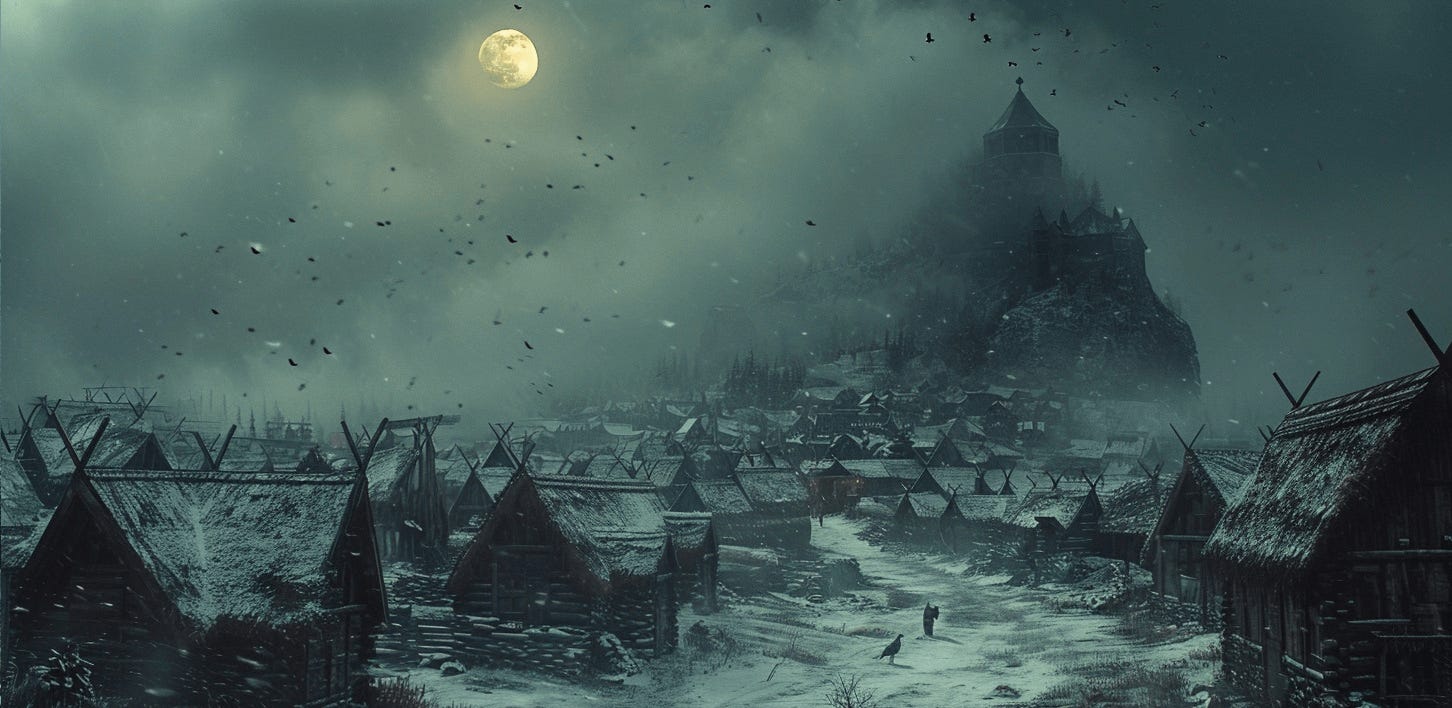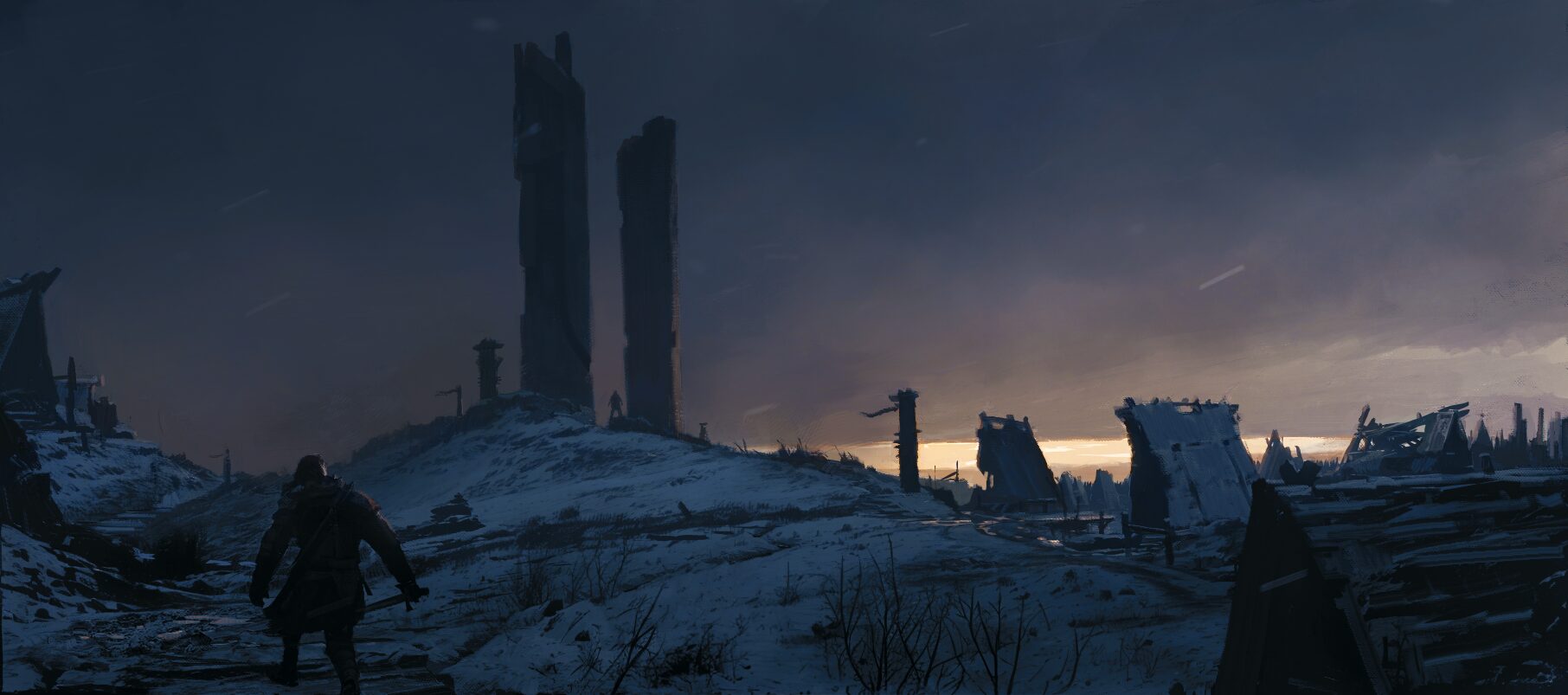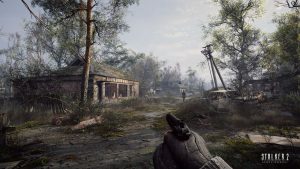
Based on award-winning series of Polish sci-fi and fantasy novels The Lord of the Ice Garden, developer Mighty Koi’s upcoming The Night Wanderer is making some intriguing promises. Not only is it looking to adapt the acclaimed novels in close collaboration with their author Jarosław Grzędowicz, The Night Wanderer is also promising Soulslike combat, a world designed around Metroidvania-esque exploration, and more. Intrigued by it as we have been, we recently reached out to the upcoming action RPG’s development team, hoping to learn more about its world, combat, development, and more. You can read our interview below.
"We’re aiming to strike a delicate balance between honoring Grzędowicz’s existing stories and weaving in our own narratives inspired by his works."
What was it about Jarosław Grzędowicz’s The Lord of the Ice Garden series that attracted you to it and motivated the decision to make a video game adaptation?
Polish fantasy literature is incredibly rich, with a long history and many talented authors crafting world-class stories. While The Witcher certainly brought attention to the genre, it’s just the tip of the iceberg. Lord of the Ice Garden is a beloved classic in both fan circles and the wider Polish literary scene. We see immense potential in its worldbuilding and story, making it a perfect candidate for a modern, immersive game adaptation.
For those who’re familiar with the source material, what kind of a balance are you looking to strike between adapting Grzędowicz’s existing stories and telling your own stories based on his works? Has Grzędowicz had any involvement in the project?
We’re aiming to strike a delicate balance between honoring Grzędowicz’s existing stories and weaving in our own narratives inspired by his works. While we deeply respect the source material, we also see an opportunity to expand upon it and offer fans fresh perspectives and experiences within the established universe. Grzędowicz has been involved in the project from the outset, providing invaluable insights and guidance to ensure our adaptation stays true to the essence of his creations while embracing new creative possibilities. Every creative change has been preapproved by the author, so we are not going against his vision.
Soulslike games with a strong narrative core (at least in a traditional sense) are something of a rarity. What was behind the decision to take this approach for The Night Wanderer? How strong of an emphasis will the game place on story and storytelling?
Rather than crafting a conventional Soulslike experience, our goal is to deliver something with a unique twist. We’re conscious of the high entry barrier often associated with soulslike games, which can deter newcomers. Our aim is to create a more accessible experience while maintaining the immersive storytelling and dynamic combat that define the genre.
How are you approaching difficulty for The Night Wanderer, especially given its Soulslike elements? For instance, will the ame feature difficulty options?
In tackling difficulty for The Night Wanderer, particularly with its Soulslike elements, we’re prioritizing accessibility without compromising the challenge integral to the genre. Our focus is on finely tuning the game’s mechanics and progression to provide a balanced experience that rewards skillful play while offering avenues for players to grow and adapt within the game world.
What can players expect from The Night Wanderer’s progression mechanics and how much build diversity they will allow for, especially given the fact that players will be playing as a defined character with his own personality and backstory?
Melee combat and Vuko’s sword play central roles in gameplay dynamics. Players will have the opportunity to extensively customize their sword, facing tough yet meaningful choices throughout the modification process. Regarding Vuko’s character development, his evolving relationship with Cyphral is pivotal. The decisions players make regarding their interactions with Cyphral will significantly influence the trajectory of the game, impacting every aspect of the narrative and gameplay experience.
"Rather than crafting a conventional Soulslike experience, our goal is to deliver something with a unique twist."
With The Night Wanderer’s promise of a Metroidvania structure, what should players expect from the game’s map in terms of its size and how varied its different locations will be?
Players can anticipate a diverse and expansive map to explore. The size of the map will be substantial, providing ample room for discovery and adventure. Each location within the game will offer its own unique atmosphere, challenges, and secrets, ensuring a varied and engaging experience.
Unlocking new abilities and being able to traverse previously unlocked areas tends to be a crucial component of Metroidvania experiences. Can you give us any indication as to what The Night Wanderer will have in store in this area?
While I can’t reveal specific abilities just yet, I can assure you that players can look forward to acquiring a diverse array of skills and tools throughout their journey. These abilities will not only enhance Vuko’s capabilities in combat but also enable exploration of new areas and discovery of hidden secrets within the game world.
Roughly how long will an average playthrough of the game be?
We aim for a 15-hour main story, and a 40-hour completionist playthrough.
What was behind the decision to not release the game as a cross-gen title? Could The Night Wanderer end up getting ports on PS4, Xbox One, or Switch down the line?
Currently, we want to focus on creating a good game on one platform, It’s too soon to tell at this point. In the long run we want to publish our games on as many platforms as possible.
Given that you have experience working with all the current-gen consoles, I was hoping to pick your brain on some of the differences between them. For instance, where their GPUs are concerned, the PS5 clocks in at 10.28 teraflops, behind the Xbox Series X’s 12 teraflops. In real terms, however, how much of an impact does that difference have during development?
While we pay close attention to technology trends to facilitate our production process, at this stage these hardware differences are not something very impactful on the said process.
The PS5 features an incredibly fast SSD with 5.5GB/s raw bandwidth. How can developers take advantage of this, and how does this compare to the Xbox Series X’s 2.4GB/s raw bandwidth?
The PS5’s remarkable SSD with 5.5GB/s raw bandwidth opens up exciting possibilities for developers to revolutionize game design and player experiences. With such immense speed, developers can significantly reduce loading times, create vast and seamless open worlds without compromises, and implement innovative gameplay mechanics like instant world streaming and dynamic asset loading. This SSD performance enables developers to deliver more immersive and responsive gaming experiences, ultimately enhancing player immersion and enjoyment.
"Players can anticipate a diverse and expansive map to explore. The size of the map will be substantial, providing ample room for discovery and adventure."
Both the PS5 and Xbox Series X boast Zen 2 CPUs, but there is a difference in the processors of both consoles. The Xbox Series X features 8x Zen 2 Cores at 3.8GHz, whereas the PS5 features 8x Zen 2 Cores at 3.5GHz. Your thoughts on this difference?
The difference in clock speeds between the Zen 2 CPUs in the PS5 and Xbox Series X might not seem like much, but it is indeed pretty noteworthy. In practical terms, this variance in clock speeds may lead to differences in performance between the two consoles, particularly in CPU heavy tasks, such as AI calculations, physics simulations, complex game logic and even some networking tasks. Ultimately, the impact of this difference in clock speeds on gaming experiences may vary depending on how developers leverage the hardware and optimize their games for each platform. Both consoles are equipped with powerful Zen 2 CPUs, and players can expect exceptional performance and responsiveness from both the PS5 and Xbox Series X.
The Xbox Series S features lesser hardware compared to Xbox Series and Microsoft is pushing it as a 1440p/60 FPS console. Do you think it will be able to hold up for the more graphically intensive games as this generation progresses?
As Microsoft positions the Xbox Series S as a 1440p/60 FPS console, there’s no denying its focus on delivering smooth performance for current-gen games. However, looking ahead, the question of how it will fare with more graphically intensive titles is valid. As game developers continue to push the boundaries of graphical fidelity, the Xbox Series S, with its scaled-down hardware compared to the Series X, may face challenges in maintaining the same level of visual fidelity.
What frame rate and resolution will the game target on the PS5 and Xbox Series X/S?
We are not yet ready to share those details with the public, but be assured that we are hard at work to provide the players with the smoothest and most enjoyable gaming experience possible.

















